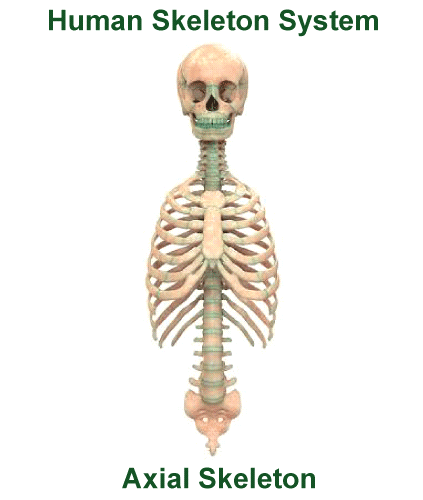Skeletal System DefinitionThe human skeletal system is a complex system made up of approximately 206 bones that provide support, defense, and mobility to the body. The number of bones decreases from approximately 270 at birth as they fuse together while growing older. Each bone has its own shape and function within the system. The skeletal system is composed of bones that contain minerals like calcium, phosphorus and magnesium, which provide strength and flexibility for movement. Our skeletons undergo continuous changes throughout our lives due to various factors like ageing, physical activity levels, and diet habits. The human skeletal system plays a crucial role in maintaining overall health by providing structural stability, supporting bodily functions, and protecting vital organs from injury. Let's learn more about the human skeletal system briefly. Information about the Skeletal System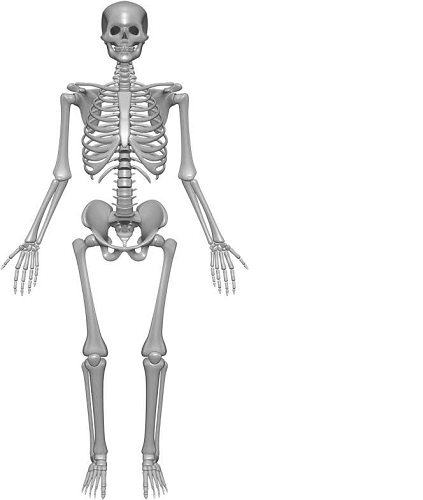
The human skeletal system comprises bones, cartilage, tendons, and ligaments that makeup 20 percent of a person's total body weight. Adult skeletons have 206 bones, while children's skeletons have more due to some bones fusing together as they grow up, particularly in the skull region. Male and female skeletons differ in bone mass and limb length. Males generally have higher bone mass and longer limbs, while females have broader pelvises to accommodate pregnancy and childbirth. The human skeletal system can be separated into two major parts: the axial skeleton (including the spinal column and skull) and the appendicular skeleton (consisting primarily of arms and legs). Skeletal System ComponentsThe skeletal system enables movement through bones and other components.
Multifarious Parts of the Human Skeletal System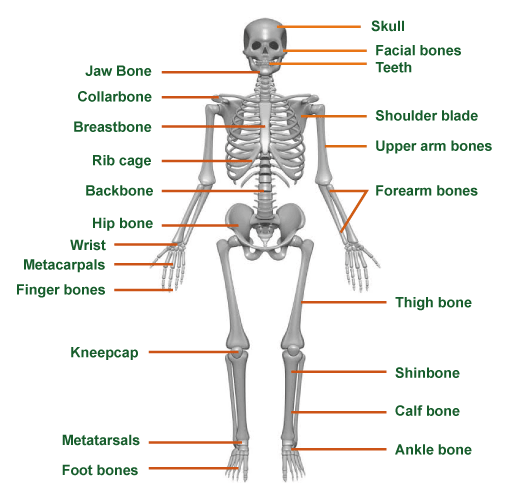
The skeletal system consists of cartilage, bones, tendons as well as ligaments. Ligaments connect bones to each other, while tendons link muscles to bones. The human skeletal system is mainly formed of bones and cartilage. 1. BonesThe human body has over 200 joints formed by its 206 bones, which are categorized into two groups based on location.
Bones can be of four different types based on their shape.
Bone StructureBones have two types of tissue: compact and spongy. Compact bone is hard and located on the outside of bones, while the spongy bone is softer and found in the centre. The ratio of these tissues within a bone depends on its function. The periosteum is the outer connective tissue of bones that contains tendon and ligament attachments, while the endosteum lines the marrow cavity. Bones are made up of two parts: the diaphysis and epiphysis, which are separated by the epiphyseal line. The diaphysis contains a marrow cavity that produces blood cells through loose connective tissue. Bone is composed of osteoblasts, which form the matrix, and mature cells called osteocytes. Osteoclasts are responsible for removing bone matrix during growth and remodelling. Bone tissue contains two components: an organic part with fibres and an inorganic part made of minerals called hydroxyapatite. 2. CartilageIt is a component of the skeletal system composed of collagen and elastin fibres embedded in connective tissue or ground substance. Cartilage is made up of chondroblasts, while the mature cells of the cartilage are known as chondrocytes. Cartilage is a type of tissue that contains chondrocytes within the matrix, surrounded by an outer layer called perichondrium. Unlike bone, cartilage lacks blood supply, but the perichondrium contains blood supply. There are three kinds of cartilage: Hyaline, Elastic and Fibrocartilage cartilage.
Axial Skeletal System AnatomyThe adult axial skeleton is composed of 80 bones, forming the body's vertical axis. These include the head, neck, chest, and spine bones. 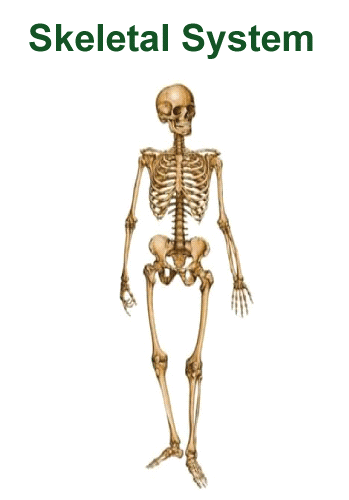
1. Skull BonesThe adult skull is made up of 22 bones, which can be categorized by their location. 2. Cranial BonesThe skull is made up of eight cranial bones that play a crucial role in protecting the brain. 3. Facial BonesThe face is made up of 14 facial bones located on the front of the skull. The auditory ossicles are six small bones located in the inner ear canal of the skull. They consist of three bones on each side of the head.
The structures of the inner ear receive sound waves from the environment through a collaborative effort. 4. HyoidThe hyoid is a bone located at the jaw's base, shaped like a "U". It functions as an attachment point for neck muscles and ligaments. 5. Vertebral ColumnThe human vertebral column consists of 26 bones, including the sacrum and coccyx. The first 24 are vertebrae. The 24 vertebrae can be divided into the following: a) Cervical VertebraeThe cervical vertebrae are seven bones located in the head and neck. b) Thoracic VertebraeThe thoracic vertebrae, consisting of 12 bones, are located in the upper back. c) Lumbar VertebraeThe lumbar vertebrae are a group of five bones located in the lower back. d) Sacrum and CoccyxThe sacrum and coccyx are fused vertebrae that provide support for sitting and serve as attachment points for ligaments. e) Thoracic CageThe thoracic cage consists of the sternum and 12 pairs of ribs, which safeguard vital organs like the heart and lungs in the upper torso. The ribs in the human body attach to the sternum directly or through cartilage, while others have no attachment and are called floating ribs. Appendicular Skeleton AnatomyThe appendicular skeleton has 126 bones, including those of the arms and legs, along with connecting bones to the axial skeleton. 1. Pectoral GirdleThe pectoral girdle connects the arms to the axial skeleton and consists of two clavicles and two scapulas. 2. Upper LimbsEach arm has 30 bones named as:
3. Pelvic GirdleThe hips, or pelvic girdle, connect the legs to the axial skeleton and consist of two hip bones. Each hip bone is comprised of three parts, which are known as:
4. Lower limbsFemur: The femur is the largest bone in the upper leg. Each leg is made up of 30 bones, which are called as:
Conditions Affected the Skeletal System1 FractureFractures, or broken bones, are often caused by injury or trauma like car accidents and falls. They come in various types that are categorized based on the location and nature of the break. 2 Metabolic Bone DiseaseMetabolic bone diseases mainly affect bone strength or integrity and can be caused by vitamin D deficiency, loss of bone mass, or certain medications like steroids or chemotherapy. 3 ArthritisArthritis causes joint inflammation, resulting in pain and restricted movement. It can be caused by cartilage breakdown, autoimmune conditions or infection. 4 CancerCancer in bones is rare, but it can occur in bone tissues or cells produced by bones. Blood cell cancers like myeloma and lymphoma are more common than primary bone tissue cancer. 5 Spinal CurvaturesA spinal curvature occurs when the spine deviates from its normal shape, which usually involves gentle forward and backward curves. There are three primary kinds of spinal curvatures which are as follows:
Significant Functions of the Skeletal System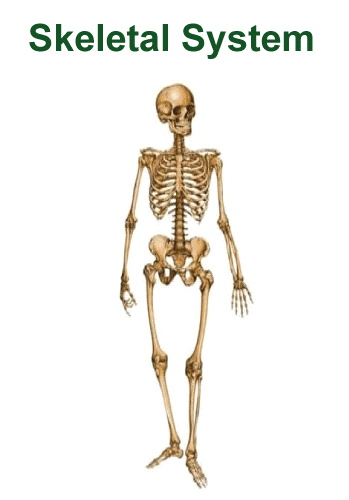
The skeletal system serves various purposes, such as movement, support, protection, blood cell production, mineral storage and endocrine regulation. 1. SupportThe skeletal system supports and protects organs while maintaining body shape. 2. ProtectionThe skeletal system acts as a buffer to protect vital organs such as the brain, heart, lungs and spinal cord. The cranium shields the eyes and brain; ribs guard the heart and lungs, while vertebrae protect the spinal cord. 3. MovementBones and tendons work together to allow movement in the body. Bones provide structure for muscles to attach, while tendons connect muscles to specific bones. 4. StorageThe bone matrix stores essential minerals for growth and repair. It acts as a calcium bank by releasing calcium ions into the blood when needed. 5. Give Shape and StructureThe skeletal structure gives the body its shape and structure. 6. Provide ImmunityThe skeletal system protects essential organs like the heart and lungs by providing immunity. 7. Production of Blood CellsBones produce white and red blood cells through the bone marrow. 8. Mineral StorageThe body stores minerals in the bones, including calcium and vitamin D. 9. Regulate Blood SugarBone cells in the skeletal system release hormones synthesized by endocrine glands for various metabolic processes. Additionally, the skeletal system helps regulate blood sugar levels. ConclusionThe skeletal system provides support and shape to the body, enables movement, produces blood cells, protects organs and stores minerals. It is also referred to as the musculoskeletal system. The skeletal system provides structure and support to the human body with its 206 bones. Without it, the body would be a bag of soft tissues. So the Skeletal system plays a crucial role in the overall functioning of the body. FAQs1) What makes up the Skeletal System?The human skeleton has 206 bones, including the skull, spine, ribs, arms and legs. Bones are made of connective tissue with calcium and bone cells and contain bone marrow, where blood cells are produced. 2) Why is the system of bones in our body called the Skeletal System?The skeletal system is made up of bones that form the framework of our body and allow us to move. It plays a significant role in our body; hence it is called the skeletal system. 3) What is the origin of the skeletal system?The skeletal system forms from the mesodermal germ layer and neural crest and can be divided into skull, limbs, vertebrae/column, and ribs/sternum. 4) How many skeletons are there?The human skeleton has two main parts: the axial skeleton (spine, chest, and head) with 80 bones, and the appendicular skeleton (arms, legs, shoulder and pelvic girdles) with 126 bones. Together they make up a total of 206 bones.
Next TopicSocial Worker Definition
|
 For Videos Join Our Youtube Channel: Join Now
For Videos Join Our Youtube Channel: Join Now
Feedback
- Send your Feedback to [email protected]
Help Others, Please Share





